PIRG be not proud: “Until recently, I had high hopes that this law would be amended. …![]() We do not mass produce our products, for that our customers love us, and for that congress has made it impossible for us to continue selling our toys without breaking the law.” — Tammy Bowles, founder of the Ohio-based educational plaything line StoryBlox, whose former line can be browsed here. More: Ken at Popehat.
We do not mass produce our products, for that our customers love us, and for that congress has made it impossible for us to continue selling our toys without breaking the law.” — Tammy Bowles, founder of the Ohio-based educational plaything line StoryBlox, whose former line can be browsed here. More: Ken at Popehat.
Posts Tagged ‘CPSIA’
CPSIA: WSJ reactions
My Monday piece in the Wall Street Journal on the many failings of the Consumer Product Safety Improvement Act drew links and reactions from Holly Jahangiri, Jonathan Adler at Volokh (including an interesting, if not particularly CPSIA-related, commenter anecdote about old books and library guidelines), Peter Reynolds/Return Play to Kids, Katherine Mangu-Ward/Reason “Hit and Run”, Carter Wood/ShopFloor, Bookworm Room, and Hans Bader/CEI “Open Market”. The WSJ comments also include one from Bill Upton of Ann Arbor, Michigan which includes the following disturbing assertion: “The CPSC has ruled that the paper, internal bindings and standard inks in [post-1985] children’s books are safe, but other standard components, including the top-coatings used to protect the vast majority of book covers, still don’t have a green light.”
Welcome Wall Street Journal readers
I’ve got an op-ed in today’s Wall Street Journal on CPSIA (the Consumer Product Safety Improvement Act) and Congress’s unwillingness to reform it despite its calamitous and unnecessary impacts on the children’s product business, especially its smaller participants. If you’re new to this site, here are some pointers for further reading about the issues raised in the piece:
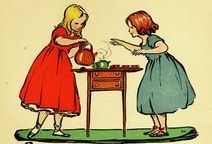
- General coverage of the law;
- Congress’s role, and last Thursday’s hearing;
- The postponement until February of the main testing rules and the minibike and bicycle bans;
- The law’s effects on secondhand stores, on pre-1985 books, and on the toy and apparel businesses;
- The tracking label rules, which became effective last month;
- The exemption of industry giant Mattel from third-party independent lab testing;
- The push for “traceability” in food and farm safety.
Readers who use Twitter may also want to follow this stream, which includes regular updates from my @overlawyered and @walterolson accounts as well as from many other persons who follow the law.
PUBLIC DOMAIN IMAGES from Ethel Everett, illustrator, Nursery Rhymes (1900), courtesy ChildrensLibrary.org. ![]()
CPSIA chronicles, September 12
- On Thursday Henry Waxman’s House Commerce Committee finally held its long-promised hearing on the Consumer Product Safety Improvement Act, the first such hearing by a committee with legislative jurisdiction since the calamitous law went into effect in February.
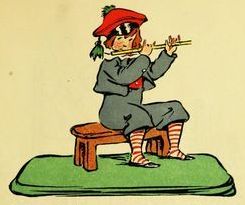 (The Small Business Committee, a panel with no legislative authority over the law, had gone first.) As noted last week, Thursday’s virtually dissent-free event hardly counted as much of a hearing, since Waxman turned down all pleas to allow testimony from actual affected businesses or other critics or victims of the law. Instead he called as his single witness recently appointed CPSC chair Inez Tenenbaum, who hewed closely to the line he (Waxman) wished to hear. A Washington Times editorial is appropriately scathing, and Rick Woldenberg has much more about the committee majority’s finger-in-ears response to the broad outcry over the law. Ranking Republican Joe Barton (R-Texas), who supported the law’s passage, did say that “we have all been inundated” with constituent messages about its ill consequences. The Handmade Toy Alliance has published the statement that Jill Chuckas of Crafty Baby would have made if invited to testify (more).
(The Small Business Committee, a panel with no legislative authority over the law, had gone first.) As noted last week, Thursday’s virtually dissent-free event hardly counted as much of a hearing, since Waxman turned down all pleas to allow testimony from actual affected businesses or other critics or victims of the law. Instead he called as his single witness recently appointed CPSC chair Inez Tenenbaum, who hewed closely to the line he (Waxman) wished to hear. A Washington Times editorial is appropriately scathing, and Rick Woldenberg has much more about the committee majority’s finger-in-ears response to the broad outcry over the law. Ranking Republican Joe Barton (R-Texas), who supported the law’s passage, did say that “we have all been inundated” with constituent messages about its ill consequences. The Handmade Toy Alliance has published the statement that Jill Chuckas of Crafty Baby would have made if invited to testify (more). - In an August 26 WSJ letter to the editor, Eric Havill of Branchport, N.Y. observes that Congress’s refusal to fix the law “is, if possible, even more irresponsible than the original legislation.”
- By a unanimous vote, the CPSC recently confirmed that Mattel, the giant toymaker whose many recalls helped touch off the lead-in-toys panic in the first place, has qualified for an exemption from third-party (outside lab) testing of its products under CPSIA, and can instead test in its own in-house labs. Of course, most of Mattel’s competitors are less fortunate and do not operate on a scale that will make such an exemption feasible. The exemption for “firewalled” in-house labs, deemed by one critic a “hall pass,” was something Mattel obtained through intense lobbying back when the law was under consideration. Like the other giant in the business, Hasbro, Mattel actively lobbied for CPSIA’s passage, and even as the law has brought undreamt-of woe to thousands of smaller producers of kids’ products, the two big companies seem to be doing rather well under it. More: Timothy Carney, Washington Examiner; Brad Warbiany, Liberty Papers; Christopher Taylor, Word Around the Net. Other reactions to the exemption: Holly Jahangiri, Rick Woldenberg, Ed Morrissey/Hot Air (“one of the companies that created the problem in the first place has gotten a waiver”), Katherine Mangu-Ward/Reason (“Mattel now has a cost advantage on mandatory testing, and a handy new government-sponsored barrier to entry for its competitors”), Handmade Toy Alliance.
- What’s going to replace forbidden phthalates in kids’ products now that CPSIA has banned them? Probably alternative plasticizing chemicals about which we know less, notes Andrew Langer in Roll Call.
- It’s old news, of course, that the CPSC asserts the power to go after eBay and Craigslist sellers, church bazaars, homeowners who hold yard sales and other sellers of used items that do not comply with CPSIA and other safety standards (although evidence is very sparse that most members of Congress actually realized the law would reach sales of those kinds.) Last month the CPSC saw fit to announce “Resale Roundup”, a new crackdown on secondhand sales. It also revised its book of guidance for resellers, in ways Rick Woldenberg finds less than enlightening. Discussion: Adler/Volokh, Ed Morrissey/Hot Air (“What did we ever do before the CPSIA protected the US through its throngs of federal nannies? How did we ever survive garage sales in the past 233 years?”), Washington Times (“from yard sales to jail cells”), Katherine Mangu-Ward/Reason, John Stossel, Deputy Headmistress/Common Room (“Remember when Congress assured us that the little guys had NOTHING to worry about with the CPSIA because they weren’t going to come after us? They. Lied.”) On the brighter side, McClatchy’s James Rosen quotes spokesperson Scott Wolfson as saying the commission isn’t planning to seek admittance to inspect private homes and garages to enforce the law. So be thankful for small favors.
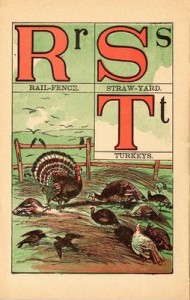
PUBLIC DOMAIN IMAGES from Ethel Everett, illustrator, Nursery Rhymes (1900), and (illustrator not known) Farm Yard ABC (c. 1880), both courtesy ChildrensLibrary.org.
CPSIA on Thursday: A fine hearing, with one witness…
 A fine hearing/My friends, this is… Rep. Waxman’s plan for a dissent-free panel this Thursday (Sept. 10) is to call as the only witness CPSC chair Inez Tenenbaum, to talk up the merits of the law and her efforts as new steward of the agency. It’s not as if the law’s controversial or anything! The Handmade Toy Alliance wonders whether he’ll get away with it.
A fine hearing/My friends, this is… Rep. Waxman’s plan for a dissent-free panel this Thursday (Sept. 10) is to call as the only witness CPSC chair Inez Tenenbaum, to talk up the merits of the law and her efforts as new steward of the agency. It’s not as if the law’s controversial or anything! The Handmade Toy Alliance wonders whether he’ll get away with it.
PUBLIC DOMAIN IMAGE from Benjamin Cobb, Yankee Mother Goose (Ella Brison, illustrator), courtesy ChildrensLibrary.org.
CPSIA on the rocks
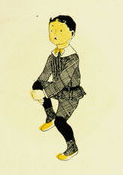 As noted earlier in this space, many ordinary rocks — you know, the kind you kick with your foot — flunk the exceedingly stringent lead limits in the Consumer Product Safety Improvement Act. And that’s not all, as Rick Woldenberg relates:
As noted earlier in this space, many ordinary rocks — you know, the kind you kick with your foot — flunk the exceedingly stringent lead limits in the Consumer Product Safety Improvement Act. And that’s not all, as Rick Woldenberg relates:
… if foolish educational companies want to sell rocks to schools or for inclusion in educational kits sold in toy stores, they must now test the rocks not only for lead but also for sharp points. Yes, rocks with sharp points need to be restricted under ASTM F963 for children aged eight years old or younger. The CPSC has yet to issue guidance to millions of curious Americans on how to manage this exposure when walking to the park or playing catch with the dog in the backyard. …
Is there a testing standard for rocks in the head? Is the concern lead, sharp points or that irritating rattling noise?
Per the Woldenberg entry we linked in May, “Michael Warring of American Educational Products reports that a school opted to stop using AmEP’s rocks to teach Earth Science and will instead rely on a POSTER.”
PUBLIC DOMAIN IMAGE from Benjamin Cobb, Yankee Mother Goose (Ella Brison, illustrator), courtesy ChildrensLibrary.org.
CPSIA: miscellaneous reading
Commentaries from various quarters on the dreadful child-safety law:
- “Hope and change — and children’s books” [Michael Barone, D.C. Examiner; note however that the law at present does not allow for general enforcement by private lawyers] More on kids’ books: Morton Goldberg, “Inoculated”; Books Bikes Boomsticks (“I don’t think I’ve ever felt quite the quiver of rage I felt” on learning of book angle); Deputy Headmistress (reacting to that post); Grad Student Madness (waiting for the black market to spring up in vintage kids’ books). Esther at Reader’s Loft has drawn up some decision flow charts that may help in determining whether a particular kids’ book needs expensive testing under the law. And “If Your Kid Eats This Book, Everything Will Still Be Okay” — that’s the title of a new book offering child health advice, not a CPSIA critique [ER Stories]
- “Lead-footed safety issues” [Carter Wood, Washington Times] And let’s hope Washington Post editors take the time to read their own paper [same at ShopFloor]
- Lenore Skenazy, “The risk of avoiding all risk” [The Post Chronicle; see also Rick Woldenberg]. Related: “More toys from our youth that’d be illegal today” [Doug Ross] And you just know this one’s European, not U.S. [Berg Toys “Moov”]
- Suppose Congress had never passed CPSIA — what would be the actual risk that your child would suffer lead poisoning from his dirtbike or other playthings? Essentially zero, as Rick Woldenberg explains in a post from this spring somehow unlinked before now. Indeed, ordinary dirt, which kids have been known to get on their hands and faces from time to time, contains higher concentrations of naturally occurring lead than many of the products whose makers have been hard hit by the law. Likewise, Deputy Headmistress explodes a few myths of CPSIA proponents. And what’s this about infinitesimal residues in children’s vitamins being (no doubt correctly) deemed safe by the federal government?
- Finally, the valuable site What Is the CPSIA, which is organized as a sort of FAQ to answer common questions about the law, has added substantially to its content in recent weeks and well repays a repeat visit.
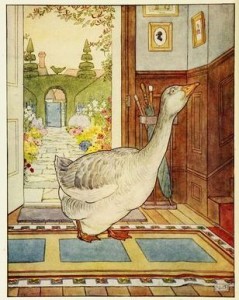
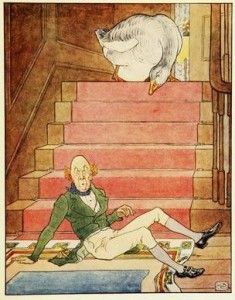
PUBLIC DOMAIN IMAGES from Leslie Brooke, illustrator, Oranges and Lemons: A Nursery Rhyme Picture Book (1913), courtesy ChildrensLibrary.org.
CPSIA upends the kids’ furniture business
Makers call it “impulsive”, “ill-conceived”, and “chaotic”. [Modern Woodworking]
CPSIA: August 14 arrives
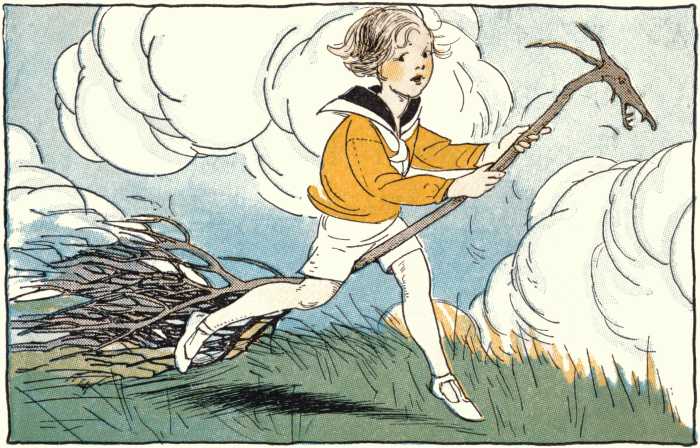 On Friday several key provisions of the Consumer Product Safety Improvement Act of 2008 took effect [CPSC release]. The permissible amount of lead in products dropped from 600 parts per million to 300 ppm, ensuring that more zippers, rocks, brass bicycle parts and other harmless items will fail; the new tracking-label mandate went into effect for newly manufactured kids’ goods; and penalties went way up, from a maximum of $8,000 per violation to $100,000 per violation and $15 million overall.
On Friday several key provisions of the Consumer Product Safety Improvement Act of 2008 took effect [CPSC release]. The permissible amount of lead in products dropped from 600 parts per million to 300 ppm, ensuring that more zippers, rocks, brass bicycle parts and other harmless items will fail; the new tracking-label mandate went into effect for newly manufactured kids’ goods; and penalties went way up, from a maximum of $8,000 per violation to $100,000 per violation and $15 million overall.
The Associated Press has good coverage. It talks to, among others, Michael Warring, president of American Educational Products, a producer of teaching aids such as globes, maps and animal models based in Fort Collins, Colo. who says he has had no safety recalls or lead problems in his fifteen years of business, but says new testing mandates will cost $2,000 per product item, not counting the costs of tracking labels. The AP story even runs on the New York Times website, thus eroding that paper’s impressive record of shielding its readers from information on the law’s consequences. The WSJ news side quotes new CPSC chairman Inez Tenenbaum as saying the law will be enforced “vigorously”, following similar language in an interview last month (“Tenenbaum said the industry has had adequate time to prepare for the new requirements;” more).
The Washington Times’ editorial gives generous credit to this website for sounding the alarm:
For a year, the Manhattan Institute’s Walter Olson has been compiling horror stories about the Consumer Product Safety and Improvement Act at his Overlawyered blog. Those stories — about what Mr. Olson describes as an “absolutist, not to say fanatical” law — seem to be endless. Yet an out-of-touch Congress continues to ignore the horrible fruits of its handiwork.
The Wall Street Journal editorializes:
Eight bills have since been introduced in the House to remedy the problems [with CPSIA], only to stall in the ideological quicksand of Mr. Waxman’s Energy and Commerce Committee. He has so far failed even to hold hearings.
Greco Woodcrafting has a small toymaker’s perspective.
Deputy Headmistress is irritated by certain blog commenters whose reaction on learning of this law is, “Nobody will enforce it, there has to be a way around it, if you don’t find a way around it you’re too dumb to be in business, it doesn’t mean what it says, they’ll have to take care of it, obviously this wasn’t what the law was for so don’t worry about it, this is just scare-mongering, try this loophole, that other loophole should work…” She also wonders in what sense the law’s consequences should count as truly “unintended”.
Some more background coverage, previously unlinked: Andrew Langer (Institute for Liberty), Roll Call; H. Sterling Burnett and Michael Hand, “Getting the Lead Out Kills Small Businesses, Doesn’t Save Children”, National Center for Policy Analysis #665; Jennifer Upton, Louisville Courier-Journal and Kentucky Kids Consignment Sales. And Hugh Hewitt’s audio interview (auto-play) with Rick Woldenberg comes highly recommended; some print excerpts here [NAM “ShopFloor”].
Public domain image: Grandma’s Graphics, Ruth Mary Hallock.
CPSIA developments; posting lull
I’ve got an out of town trip over the next few days, so posting from me is likely to consist of a relatively few scheduled short posts.
There have been several important developments with CPSIA over the past month, to which time has not yet permitted me to do justice. In particular, the CPSC late last month issued guidance on the tracking-label rules that take effect later this week. Its interpretation is more lenient on several issues than most observers were expecting, particularly for craft and small-batch producers, but the rules remain a gigantic headache for thousands of businesses.
Even more recently, the commission offered further guidance on a few other issues, notably its interpretation of what materials will be considered inherently free of lead under normal circumstances. These new rules are being cautiously welcomed as helpful to some in (for example) the apparel trade, but they are unfortunately bad news for friends of many other products, in particular vintage children’s books, which are not going to be considered intrinsically safe. Finally, the commission appears to be giving off some favorable signals on the issue of “component testing” (i.e., avoiding endless and costly re-testing of already-tested product components).
I hope to treat these new developments at more length in future posts. In the mean time, here are some relevant links:
Tracking labels: commission action and policy in PDF, Rick Woldenberg coverage, Kathleen Fasanella/Fashion Incubator, Buggalove, Play Meter (scroll to 7/27), Greco Woodcrafting, Publisher’s Weekly and earlier, Hugh Hewitt.
Intrinsically safe materials: CPSC final rule in PDF format, Rick Woldenberg and more, The Smart Mama.
The fate of vintage books: Deputy Headmistress and more, Rick Woldenberg, and — from back in the spring but not linked then — Assistant Village Idiot, Deputy Headmistress, Carter Wood, and Valerie Jacobsen as well as more.
